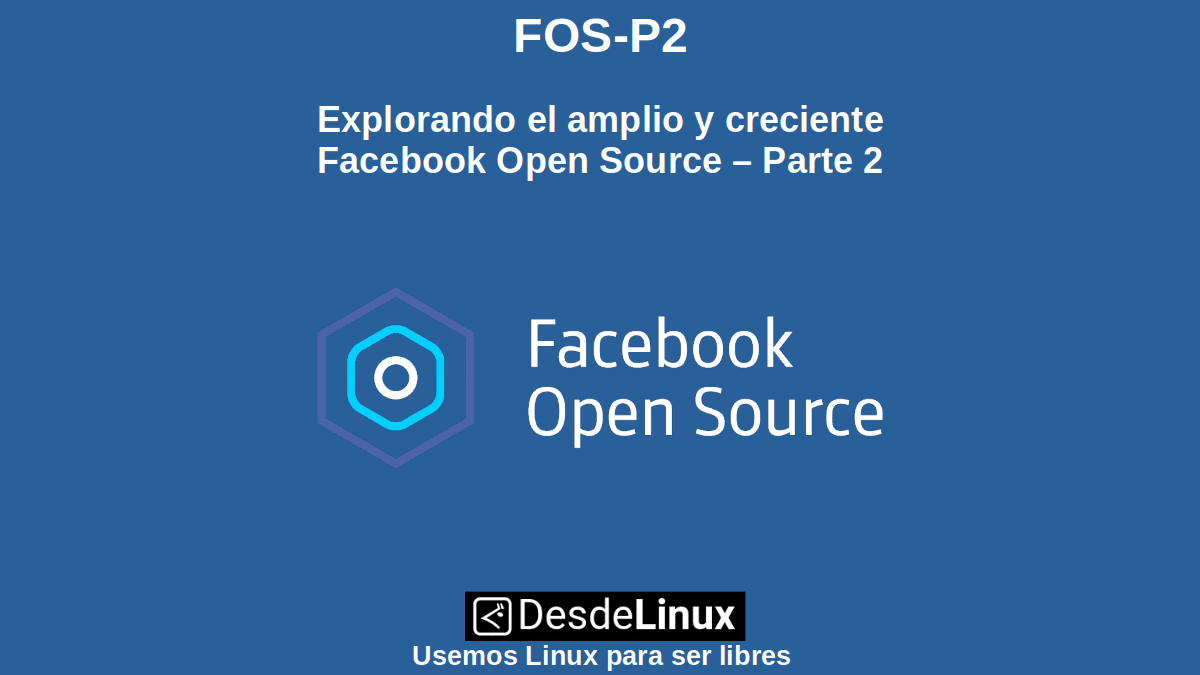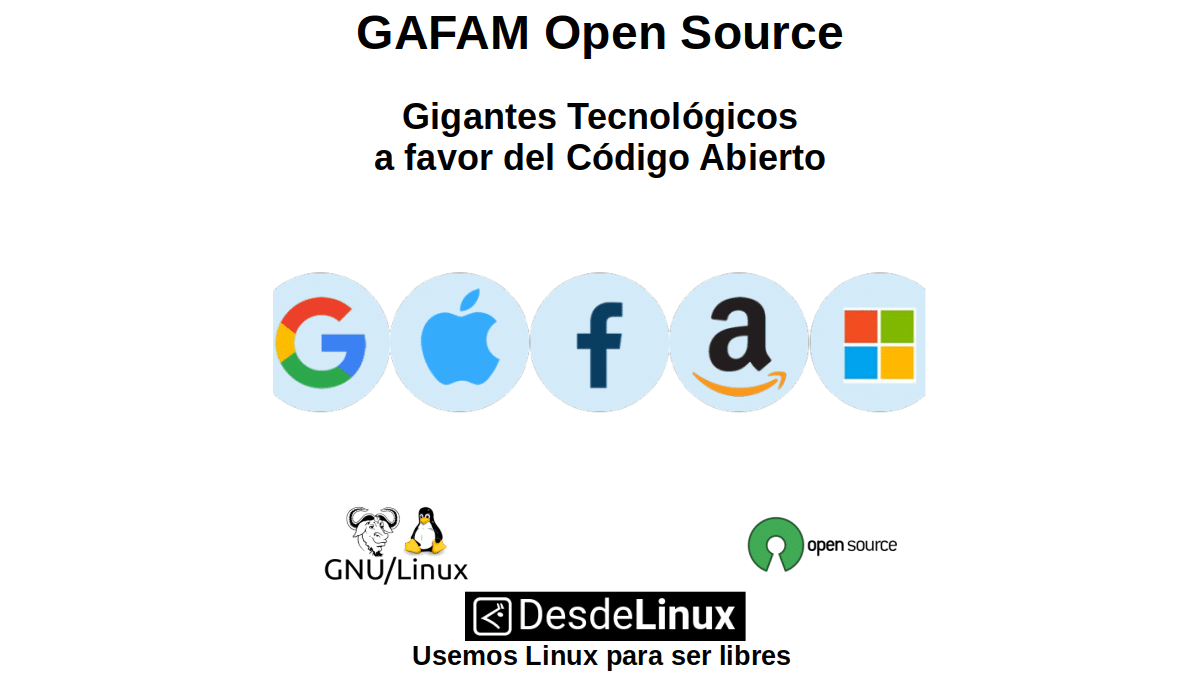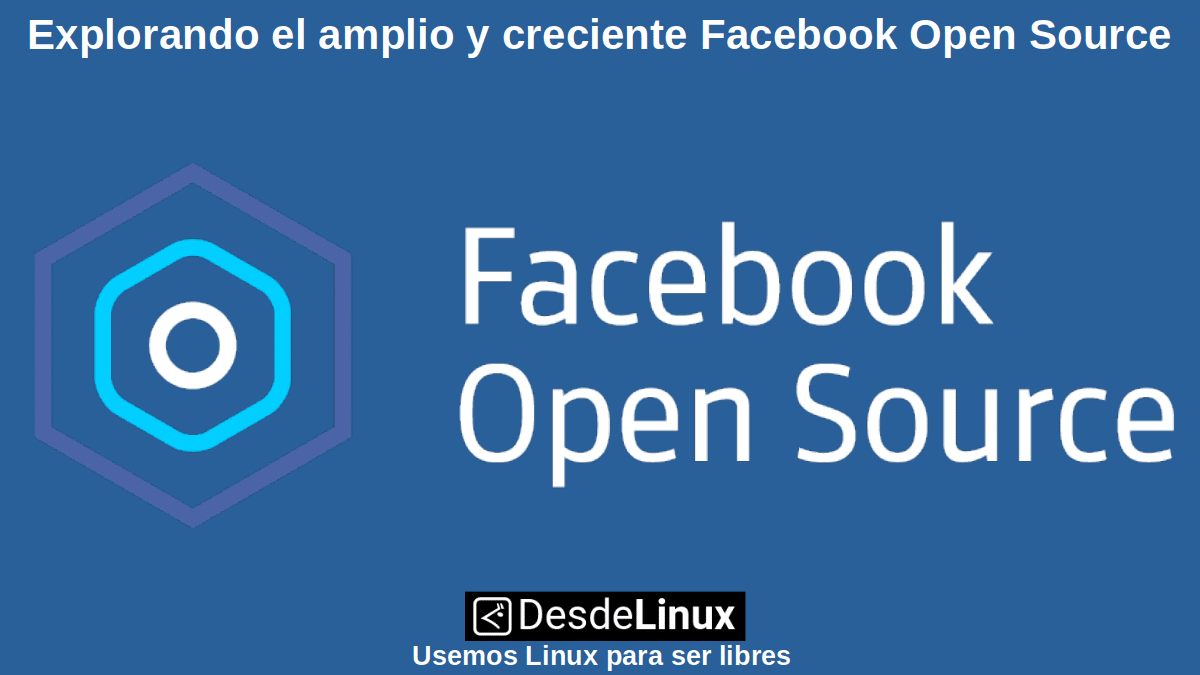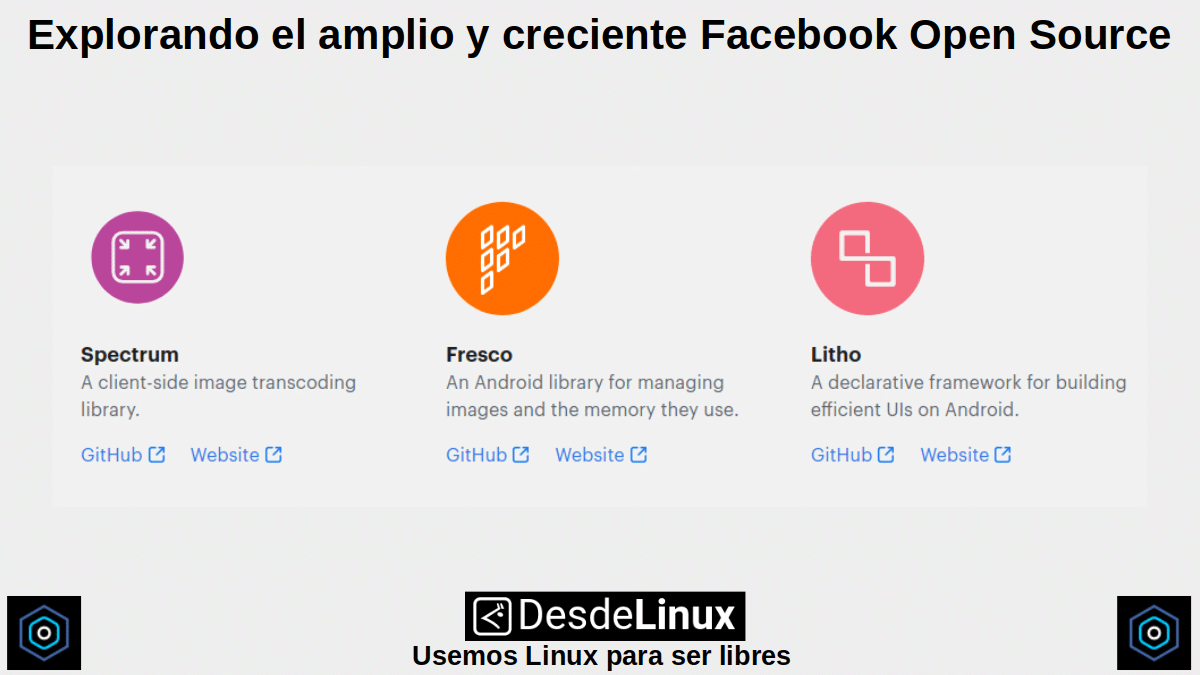
FOS-P2: Exploring the vast and growing Facebook Open Source - Part 2
In this second from the series of articles on the "Facebook Open Source" We will continue our exploration of the vast and growing catalog of open apps developed by the Technological Giant de Facebook.
In order to continue expanding our knowledge of the open applications released by each of the Technological Giants of the group known as GAFAM. What, as many already know, is made up of the following North American companies: "Google, Apple, Facebook, Amazon and Microsoft".

GAFAM Open Source: Technological Giants in favor of Open Source
For those interested in exploring our initial publication related to the topic, you can click on the following link, after finishing reading this publication:

While, to explore the related previous parts of this series, you can click on the following link:


FOS-P2: Facebook Open Source - Part 2
Applications of the Facebook Open Source
Before starting, it is good to keep in mind as we express in the Part, that the official website of the Facebook Open Source (FOS) It is divided into 10 highlighted parts or sections, which are:
- Android
- Artificial Intelligence
- data infrastructure
- DeveloperOperations
- Development Tools
- Frontend
- iOS
- Languages
- Linux
- Security

And continuing with the following 3 applications of the first section mentioned «(Android)», we have the following:
Spectrum
Briefly, in the FOS describe this application as follows:
"A client-side image transcoding library."
While his website on GitHub defines it more broadly, as follows:
“Spectrum is a cross-platform image transcoding library that can be easily integrated into an Android or iOS project to efficiently perform common imaging operations. Spectrum APIs incorporate declarative features. This simplifies use for the developer by focusing on the desired result. And at the same time, this allows Spectrum to transparently choose the best execution sequence. "
Finally, from your Official website It is worth highlighting the following information:
“By directly relying on low-level codec libraries, Spectrum has the ability to control and bring out some options that are not usually exposed by platform frameworks. For example, some JPEG to JPEG operations, such as cropping, can be performed losslessly. Another example is disabling chroma subsampling to improve quality when saving graphic images as JPEGs. "
Note: You can get more official information about this application in the following link.
Fresh
Briefly, in the FOS describe this application as follows:
"An Android library to manage the images and memory they use."
While his website on GitHub defines it more broadly, as follows:
“Fresco is a powerful image display system in Android applications. Fresco takes care of loading and displaying the images, so you don't have to. It will load the images from the network, local storage, or local resources, and display a placeholder until the image has arrived. It has two levels of cache; one in memory and one in internal storage. In Android 4.x and lower versions, Fresco places images in a special region of Android memory. This allows your application to run faster, and to experience the dreaded OutOfMemoryError much less frequently. "
Finally, from your Official website It is worth highlighting the following information:
“Fresco, in addition to improving the pipeline of images, and saving data and CPU usage, allows loading an image to display a placeholder until the image has been loaded and then automatically displays the image when it arrives. When the image leaves the screen, it automatically frees its memory. "
Note: You can get more information about this application in the following link.
Litho
Briefly, in the FOS describe this application as follows:
"A declarative framework for building efficient user interfaces in Android."
While his website on GitHub define it as follows:
“Litho is a declarative framework, since it uses a declarative API to define the components of the user interface. You just have to describe the design of your user interface based on a set of immutable inputs and the framework takes care of the rest. In addition, it has an asynchronous design, and due to that, it allows to measure and layout a user interface ahead of time without blocking its thread. "
Finally, from your Official website It is worth highlighting the following information:
“Litho offers flatter view hierarchies, as it uses Yoga (a cross-platform design engine that implements Flexbox) for the layout, automatically reducing the number of ViewGroups that its UI contains. This, coupled with Litho's text optimizations, allows for much smaller view hierarchies and improves scrolling and memory performance. "
Note: You can get more information about this application in the following link.

Conclusion
We hope this "useful little post" on this second exploration of the «Facebook Open Source», offer the opportunity to meet a new, interesting and useful open application developed by the Technological Giant of «Facebook»; and is of great interest and utility, for the entire «Comunidad de Software Libre y Código Abierto» and of great contribution to the diffusion of the wonderful, gigantic and growing ecosystem of applications of «GNU/Linux».
For now, if you liked this publicación, Do not stop share it with others, on your favorite websites, channels, groups or communities of social networks or messaging systems, preferably free, open and / or more secure as Telegram, Signal, Mastodon or another of Fediverse, preferably. And remember to visit our home page at «DesdeLinux» to explore more news, as well as join our official channel of Telegram from DesdeLinux. While, for more information, you can visit any Online library as OpenLibra y jedit, to access and read digital books (PDFs) on this topic or others.